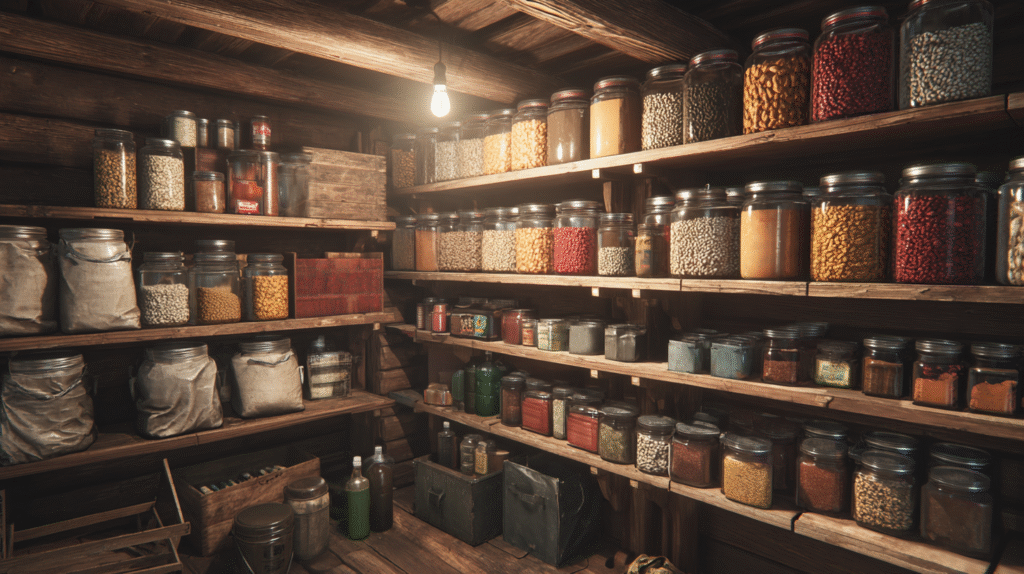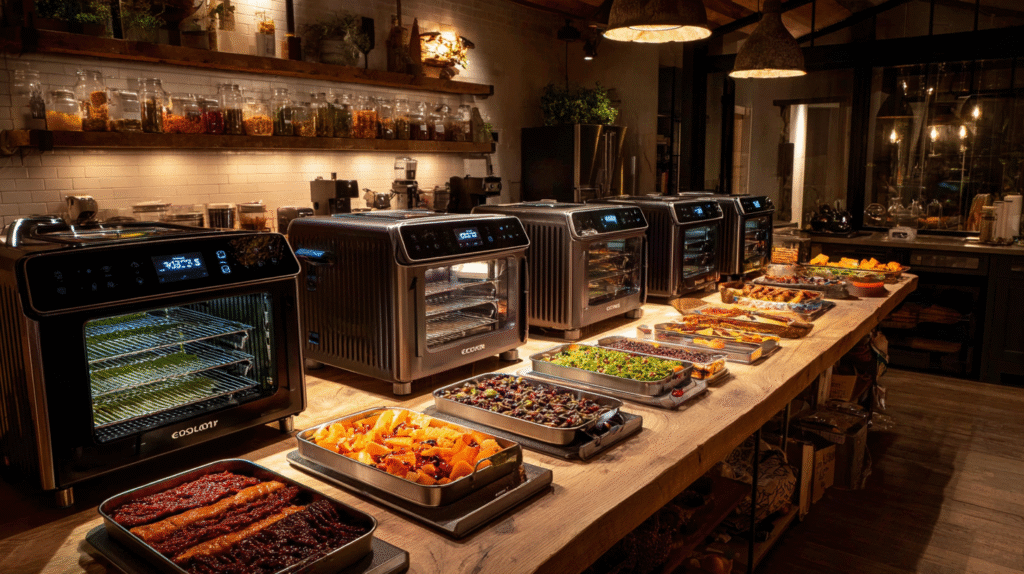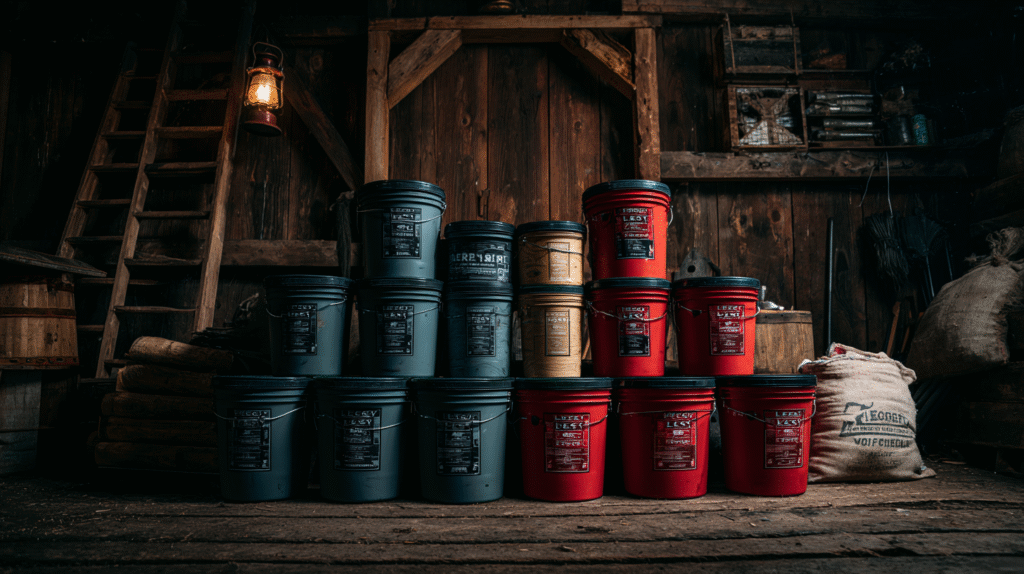Introduction
In an unpredictable world, having a reliable food supply can make all the difference between security and vulnerability. From global pandemics and economic downturns to natural disasters and supply chain disruptions, recent years have shown just how fragile our modern food system can be. For many, the sight of empty shelves or rising grocery bills has been a wake-up call: self-reliance isn’t just for hardcore survivalists—it’s becoming a necessity for everyday families.
Long-term food storage is more than filling your pantry with canned soup. It’s a proactive strategy that ensures your household will have the calories, nutrition, and variety needed to thrive no matter what challenges arise. Done properly, it can save you money, reduce waste, and give you peace of mind knowing that your family is taken care of.
This comprehensive guide breaks down everything you need to know: the essential foods to store, the best storage techniques, and the step-by-step planning strategies that turn food storage from a vague idea into a well-organized system. Whether you’re new to prepping or looking to expand your stockpile into a sustainable reserve, this guide will help you get started with confidence.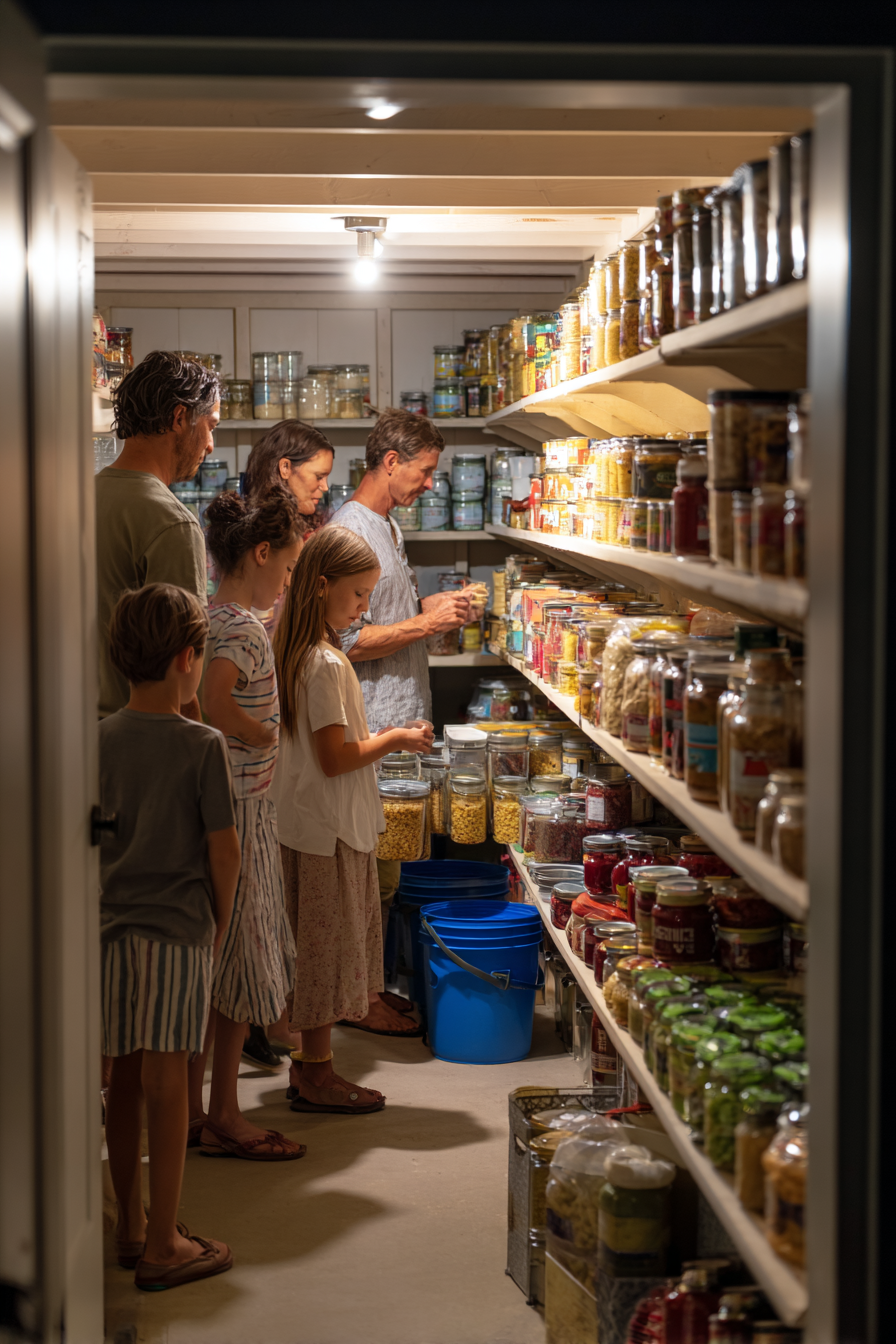
Understanding Long-Term Food Storage
At its core, long-term food storage is the practice of preserving food so it remains edible and nutritious for extended periods—often years or even decades. But it’s more than just extending shelf life. It’s about building a resilient safety net.
A Tradition Rooted in History
Food storage isn’t a modern invention. Our ancestors depended on preservation methods like drying, salting, fermenting, and root cellaring to survive harsh winters and poor harvests. Civilizations thrived or collapsed based on their ability to secure reliable food supplies. Today, while supermarkets give the illusion of abundance, that supply chain is fragile. Trucking delays, weather events, or geopolitical crises can disrupt the flow overnight.
Modern Prepping vs. Traditional Wisdom
Modern long-term storage blends ancient techniques with cutting-edge technology. Freeze-dried foods, vacuum sealing, and Mylar bag storage allow us to store food with unprecedented longevity while maintaining nutrition. Combined with tried-and-true staples like grains and canned goods, these methods create a diverse and durable pantry.
Why is Long-Term Food Storage Important?
Some people view prepping as paranoia—but food storage is simply practical. Here’s why it matters:
1. Preparedness
Emergencies rarely come with warnings. A storm can knock out power for a week. A pandemic can limit shopping trips. Political or economic turmoil can send grocery prices soaring. A stocked pantry means your family continues eating well without panic.
2. Cost Savings
Buying in bulk and storing food correctly can cut grocery bills significantly. Staples like rice, beans, and flour cost far less per pound when purchased in large quantities. Preserving seasonal produce also saves money over out-of-season imports.
3. Reduced Waste
Americans throw away an estimated 30–40% of their food supply. Proper storage ensures food lasts longer, reducing spoilage and saving your hard-earned money.
4. Nutrition & Health Benefits
Fast food and processed meals often dominate during crises. A thoughtfully stored pantry lets you prioritize real, nutrient-dense foods, keeping your family healthier when it matters most.
5. Psychological Security
Knowing you have months (or years) of meals ready removes fear from uncertain times. Instead of panic-buying with the crowd, you’ll calmly focus on your family’s well-being.
6. Bartering & Community Value
In prolonged crises, stored food can become as valuable as currency. Bags of rice, canned proteins, or extra flour may one day be useful trade goods within your community.
Essential Foods for Long-Term Storage
When building a food stockpile, focus on nutrient-dense, versatile, and long-lasting staples. A diverse pantry ensures balanced meals and prevents “food fatigue,” the burnout from eating the same few items repeatedly.
If you’re looking to build a survival pantry on a budget, check out our guide on survival pantry on a budget.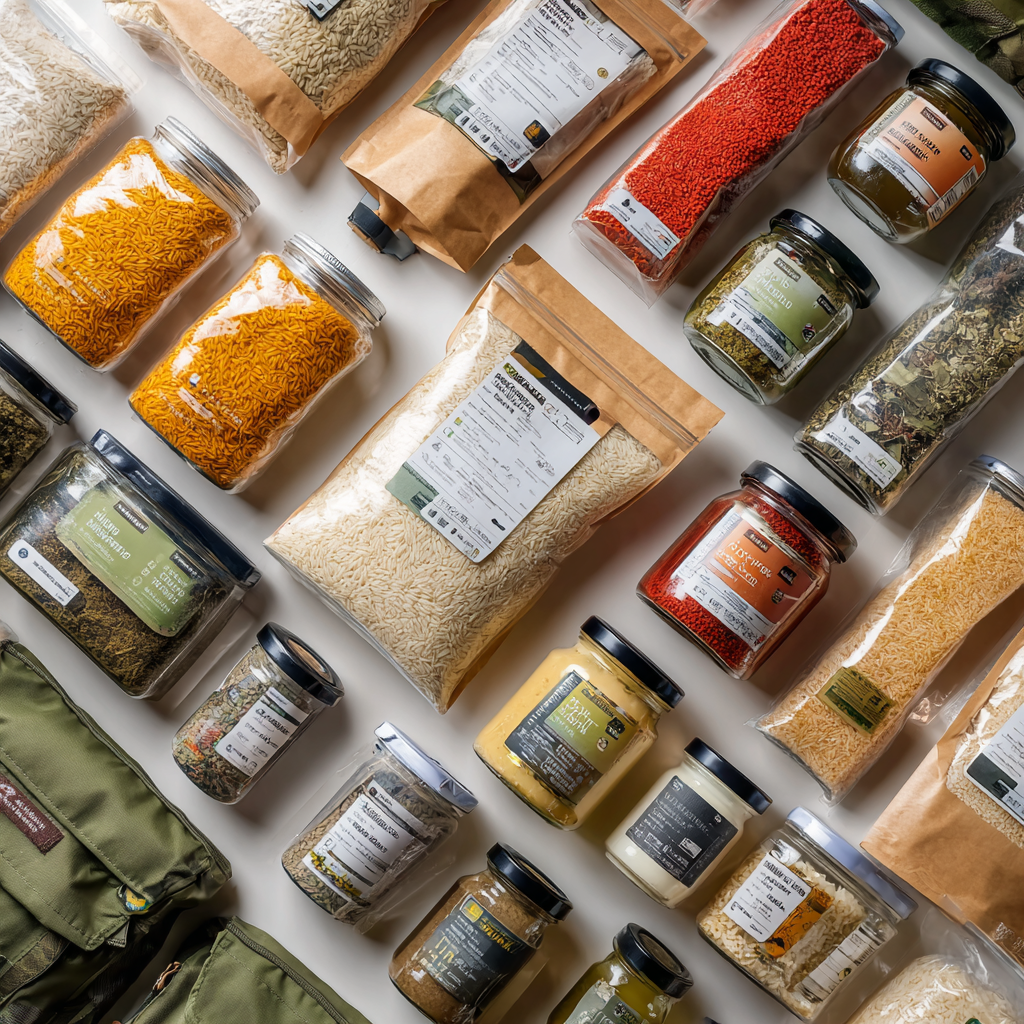
Canned Goods
Canned foods remain a backbone of food storage because they’re affordable, widely available, and often last 5–10 years when stored properly.
Canned Vegetables: Corn, green beans, carrots, and peas are reliable nutrient sources.
Canned Fruits: Peaches, pears, and pineapple add natural sweetness and vitamins.
Canned Beans: Black beans, kidney beans, and chickpeas provide protein and fiber.
Canned Meats: Tuna, chicken, and spam add essential protein to your meals.
Canned Soups & Stews: Complete meals in a can, useful when cooking is limited.
💡 Tip: Don’t worry about “expired by” dates. Most canned goods remain safe far beyond, as long as the can is intact.
Canned goods remain a backbone of foods that last 25 years in any prepper pantry.
Freeze-Dried Foods
Freeze-drying removes moisture while preserving nutrition and flavor, creating foods with 20–30 year shelf lives.
Complete Meals: Brands like Mountain House offer beef stroganoff, lasagna, and breakfast scrambles.
Fruits & Vegetables: Freeze-dried strawberries, blueberries, or peas make lightweight, nutrient-packed snacks.
Protein Options: Freeze-dried chicken, beef, and eggs integrate seamlessly into recipes.
Freeze-dried meals also feature heavily in our roundup of best freeze-dried foods for preppers. For a deeper comparison, see our guide on canned vs. freeze-dried food to decide what works best for your stockpile.
Dried Grains and Legumes
The backbone of survival pantries, grains and legumes provide affordable calories and protein.
Rice: White rice lasts 25+ years in Mylar bags with oxygen absorbers.
Wheat Berries: Can be milled into flour for bread, pasta, or porridge.
Quinoa: High protein and gluten-free.
Lentils & Peas: Quick-cooking, protein-rich staples.
Beans: Pinto, black, and navy beans last for decades when stored properly.
Supplement basic staples with flavor — see spices for survival cooking that boost morale and variety. Staples like rice and beans are cornerstones in how to store rice and beans long term for maximum shelf life. For preppers who prefer pre-packaged options, here are the best survival food kits that provide long shelf life and balanced nutrition.
Oils, Fats, and Sweeteners
Often overlooked but critical for both calories and cooking.
Oils: Coconut oil and ghee last much longer than vegetable oils.
Honey: Never spoils, doubles as medicine.
Sugar & Salt: Essential for flavor, preservation, and morale.
Powdered & Dehydrated Foods
Adding variety and convenience.
Powdered Milk: Calcium and protein for families with children.
Powdered Eggs & Cheese: Useful for baking and meals.
Dehydrated Vegetables: Carrots, onions, and bell peppers enhance soups and stews.
Proper Storage Techniques
Food is only as reliable as its storage. Without the right methods, even the best supplies will degrade.
Choosing the Right Containers
Mylar Bags with Oxygen Absorbers: The gold standard for grains and beans. Keeps out air, light, and pests.
Food-Grade Buckets: Best for bulk storage when paired with Mylar liners.
Glass Mason Jars: Great for dehydrated or freeze-dried foods in smaller quantities.
Vacuum Sealing: Extends the life of pantry items like pasta or nuts.
Mylar bags and food-grade buckets are among the best food storage containers trusted by experienced preppers. Combining good containers with vacuum seal food storage methods can add years to your supplies. Rotation is just as critical — learn the best way to rotate your emergency food stockpile to avoid waste.
Temperature & Humidity Control
Temperature: Keep storage between 50–70°F. Cooler is always better.
Humidity: Avoid basements prone to dampness. Moisture invites mold and spoilage.
Light: Store food in dark areas to prevent nutrient breakdown.
Rotation and Inventory
Use FIFO (First In, First Out) so nothing expires.
Keep a spreadsheet or notebook tracking quantities, purchase dates, and expiration estimates.
Regularly cook with stored foods so your family stays accustomed to eating them.
Common Mistakes to Avoid
Storing food in original flimsy packaging.
Forgetting to label containers.
Ignoring pests like mice or insects.
Buying foods your family won’t eat.
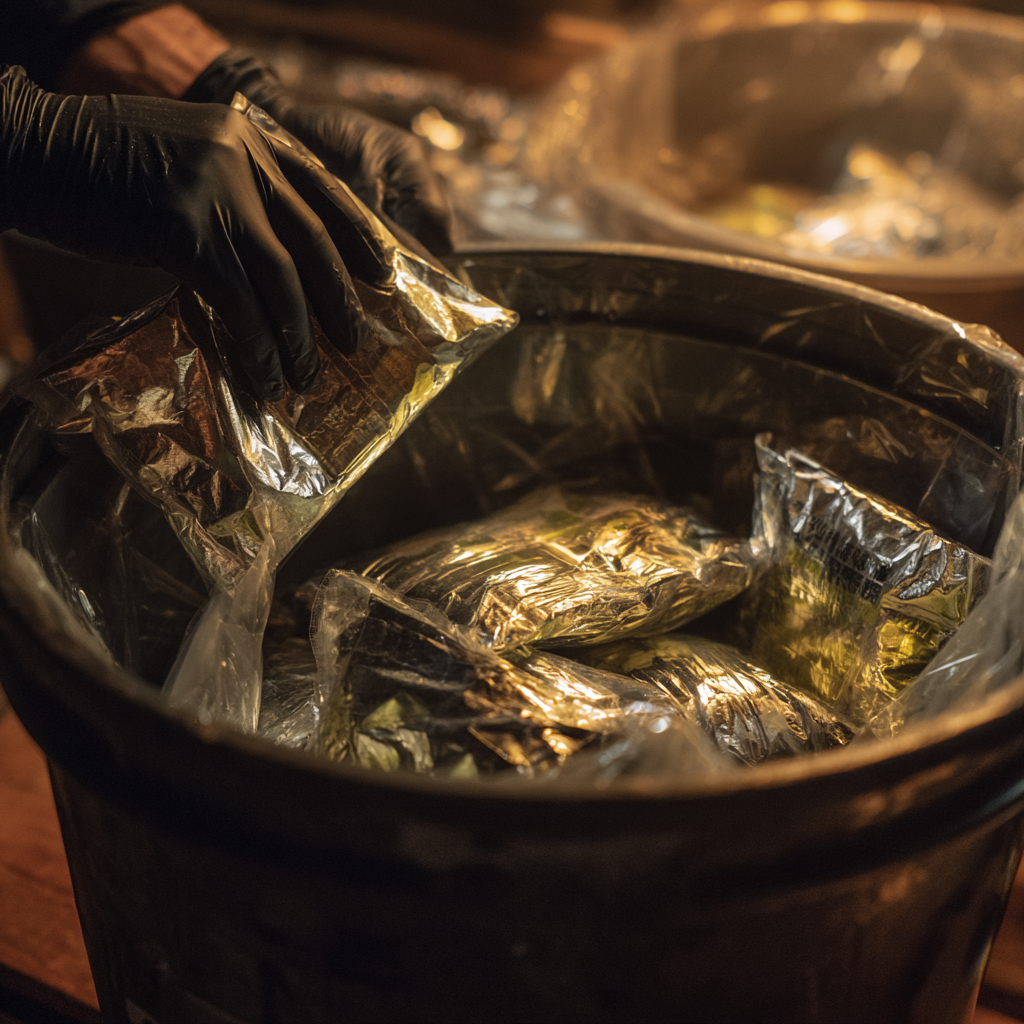
Creating a Long-Term Food Storage Plan
Randomly buying bulk rice isn’t a strategy—it’s just a pile of carbs. A clear plan ensures balance, variety, and sustainability.
1: Set Your Timeline
Decide whether you’re building a 3-month pantry, a 1-year stockpile, or beyond. Most experts recommend at least 3 months of food per household member.
2: Calculate Needs
Calories: Average adult needs 2,000–2,400 calories daily.
Macronutrients: Balance carbs, proteins, and fats.
Special Diets: Account for allergies, children, and elderly members.
3: Build in Layers
Short-Term Foods (0–1 year): Fresh produce, frozen meats, pantry items.
Medium-Term Foods (1–5 years): Canned goods, pasta, flour, oils.
Long-Term Foods (10–30 years): Freeze-dried meals, bulk grains, powdered dairy.
4: Add Variety
Include comfort foods and spices. Chocolate, coffee, and seasoning mixes make life feel normal during crises.
5: Practice & Adjust
Regularly cook with stored items to test recipes. Rotate stockpiles. Adapt as your family’s needs evolve.
Don’t overlook nutrition — see our breakdown on survival food nutrition to balance calories and vitamins.
Start Small and Expand Gradually
If you’re new to food storage, start with a small inventory and gradually build your stock. This approach makes it manageable and less overwhelming.
Simple recipes like DIY survival soup mixes are easy to start with and scale up.
Regularly Rotate Your Stock
Use the FIFO (First In, First Out) method. Always consume the oldest items first and replace them with new stock to keep your supply fresh.
With stored grains and flours, you can try survival bread recipes or incorporate best oils for survival to keep meals nutritious. Avoiding mistakes is key — here are the top food storage mistakes preppers should never make.
Advanced Tips & Strategies
Ready to take food storage to the next level?
Fermentation: Sauerkraut, kimchi, and pickles add probiotics and variety.
Smoking & Salting: Traditional preservation methods for meats and fish.
Freeze Dryers: Expensive, but allow DIY freeze-drying at home.
Budget Strategies: Buy in bulk during sales, split costs with friends, and gradually expand your stockpile.
Morale Foods: Store tea, cocoa, and spices. Boosting morale in hard times is just as important as calories.
Alternative Uses: Some stored items like honey and salt double as medicine and disinfectants.
Conclusion
Long-term food storage isn’t about paranoia—it’s about responsibility. Whether you’re preparing for a storm, inflation, or an extended crisis, a well-stocked pantry transforms fear into confidence. With the right foods, storage methods, and planning, you can ensure your family has nourishment, stability, and peace of mind in uncertain times.
Start today, even if it’s just with a single bag of rice or a few cans of beans. Each small step builds resilience. Over time, your pantry will grow into a fortress of security—a resource that stands ready no matter what the future holds.
Start your journey today by checking out products like Mylar Bags, Mountain House Freeze Dried Meals, and Food-Grade Buckets to build your emergency food supply. Remember, it’s better to be prepared than to be caught off guard!

